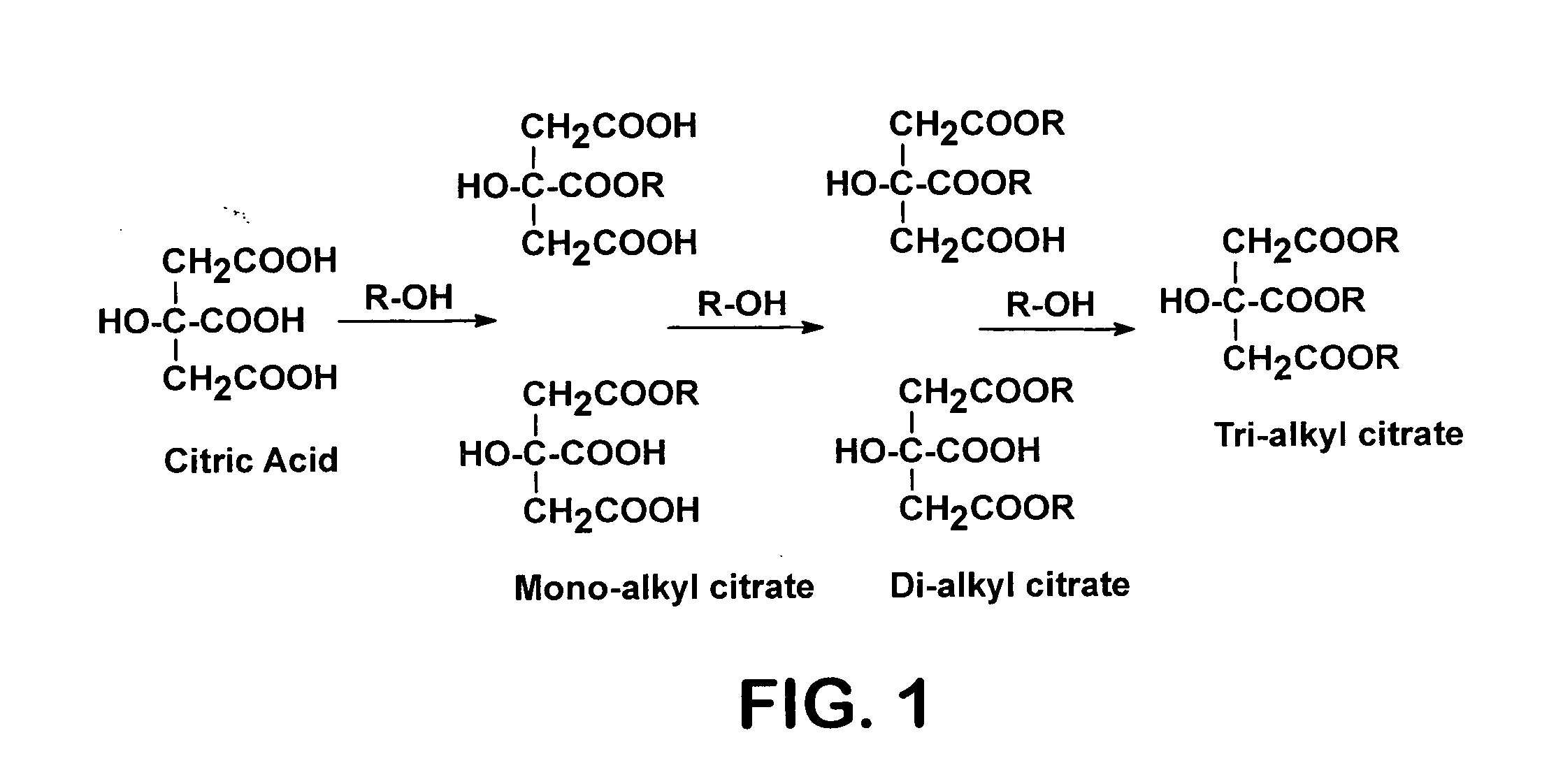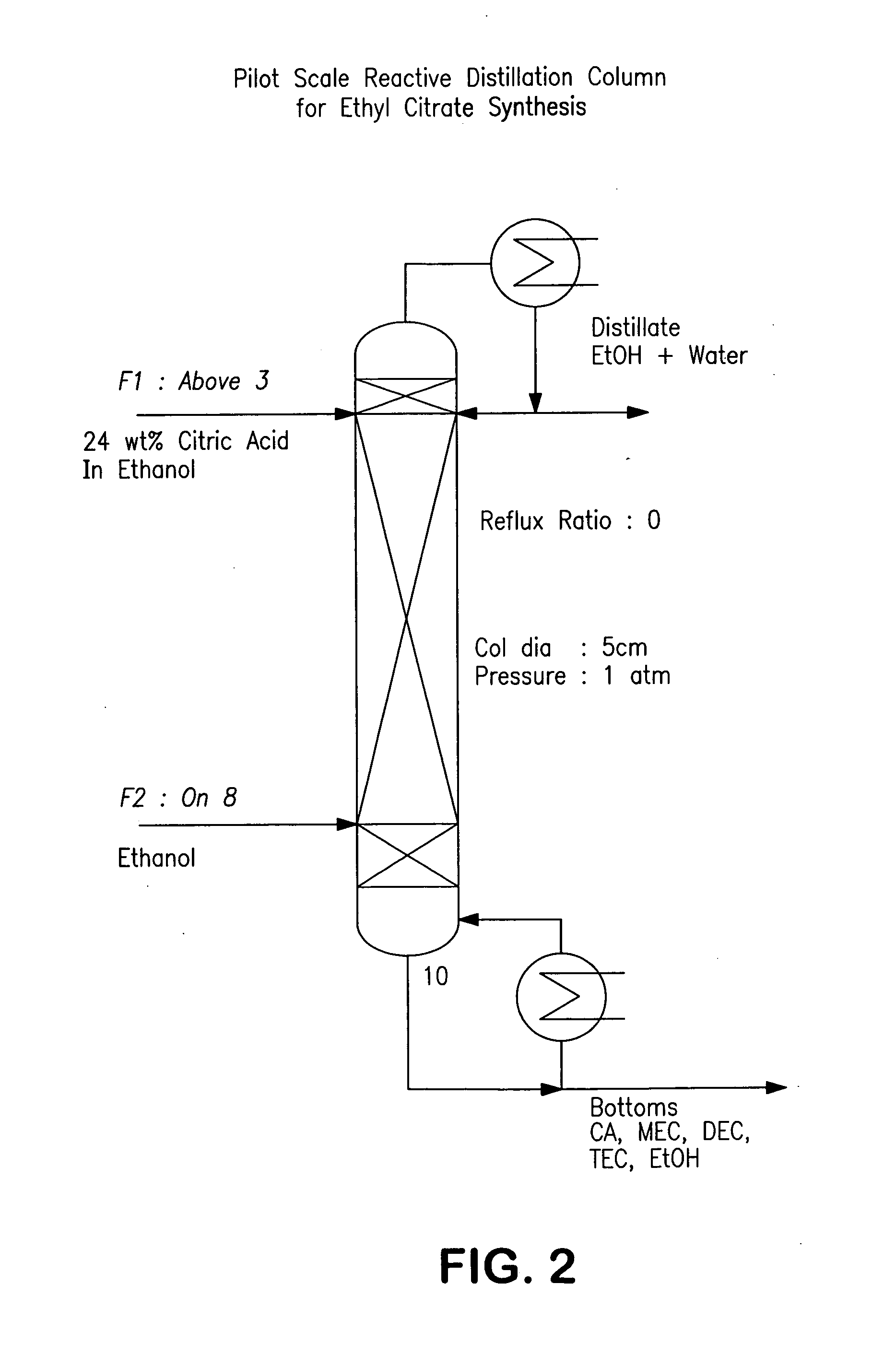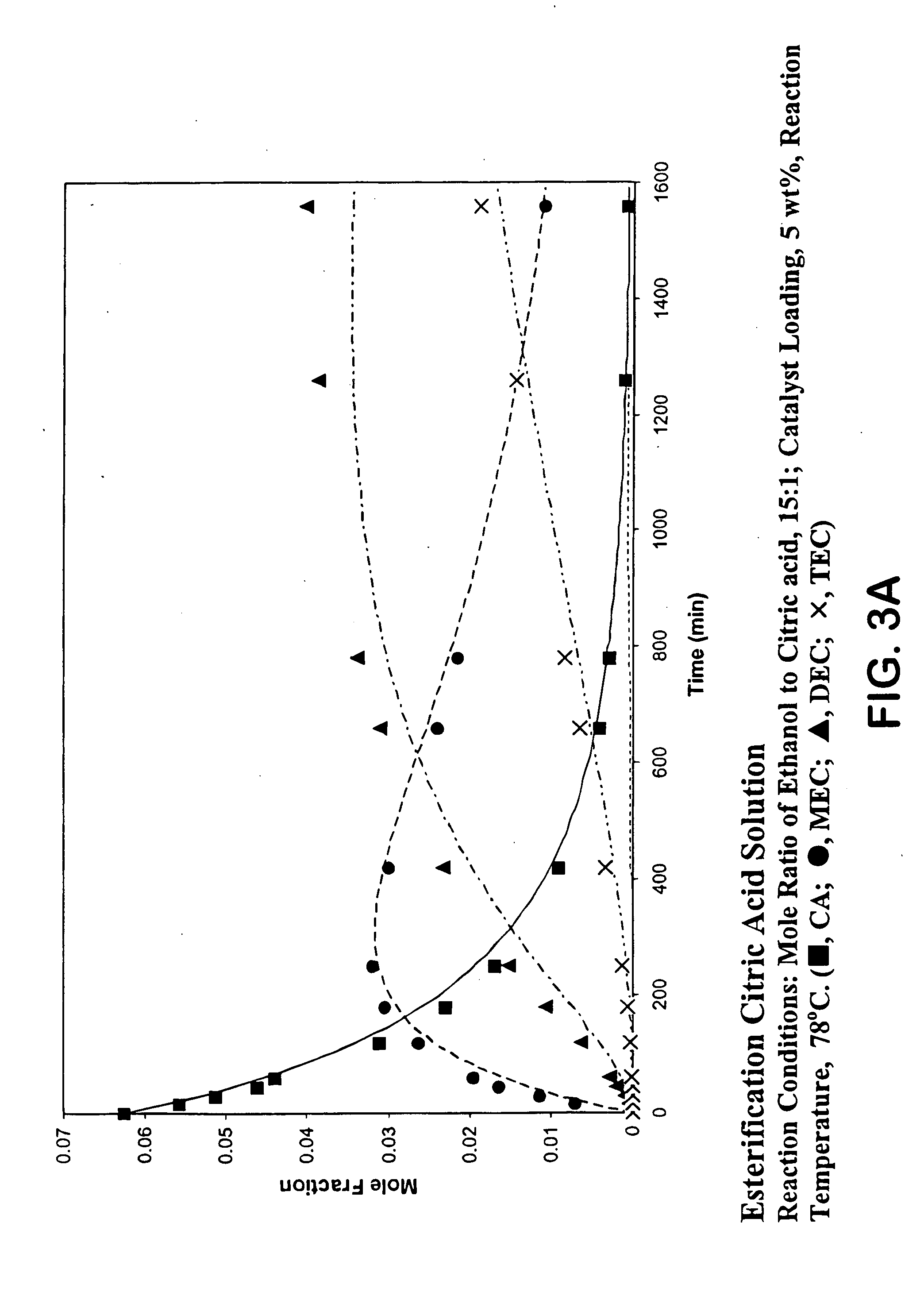Process for reactive esterification distillation
a technology of esterification and distillation process, which is applied in the direction of sustainable manufacturing/processing, separation processes, organic chemistry, etc., can solve the problems of limited conversion, suffering, and conventional reactors, and achieves the requirements of much greater complexity in design and process control
- Summary
- Abstract
- Description
- Claims
- Application Information
AI Technical Summary
Benefits of technology
Problems solved by technology
Method used
Image
Examples
case 1
[0135] FIG. 35 shows the results for reactive distillation using Scheme 1 when anhydrous citric acid in ethanol was fed to a reactive distillation column containing 35 equilibrium stages and operating at 2.5 atm pressure. It can be observed that excellent conversion of citric acid to tri-ethyl citrate is observed at a citric acid flow rate of 5.45×10−4 kmol / hr. The liquid phase composition profiles (wt %) are shown in FIG. 36. It can be seen from FIG. 24 that conversion of di-ethyl citrate to tri-ethyl citrate is the slowest step in the reactive distillation column, thus requiring a large number of stages to achieve nearly complete conversion.
case 2
[0136] FIG. 37 shows the results for reactive distillation using Scheme 1 when an aqueous 50 wt % citric acid feed was used as the feed. The column is identical to Case 1 and the citric acid feed rate is 5.45×10−4 kmol / hr. The liquid phase composition profiles (wt %) are shown in FIG. 38. It was observed that the presence of water in citric acid feed (e.g., the use of aqueous feed versus crystalline citric acid dissolved in ethanol) does not adversely affect the operation of the reactive distillation column, since the water is mostly removed in the initial top stages. Again in this case, it is the conversion of di-ethyl citrate to tri-ethyl citrate that dictates the number of stages required in the reactive distillation column.
case 3
[0137] Using Scheme 2, 2.49×10−3 kmol / hr of aqueous citric acid were fed to a plug flow reactor operating as an esterification pre-reactor at 100° C. and 2.0 atm absolute pressure. At these conditions, a conversion close to the equilibrium value is obtained for a reactor space time of approximately 27 hours. The outlet from the plug flow reactor is fed to a simple distillation column of 10 stages operating at 1 atm pressure. About 90% of the water is removed along with ethanol from the distillate. The bottom stream is then fed to a reactive distillation column having 40 stages and operating at 2.5 atm pressure. Nearly complete conversion of citric acid to tri-ethyl citrate is observed under these conditions as shown in FIG. 39.
PUM
| Property | Measurement | Unit |
|---|---|---|
| molar ratio | aaaaa | aaaaa |
| molar ratio | aaaaa | aaaaa |
| Reaction Temperature | aaaaa | aaaaa |
Abstract
Description
Claims
Application Information
 Login to View More
Login to View More - R&D
- Intellectual Property
- Life Sciences
- Materials
- Tech Scout
- Unparalleled Data Quality
- Higher Quality Content
- 60% Fewer Hallucinations
Browse by: Latest US Patents, China's latest patents, Technical Efficacy Thesaurus, Application Domain, Technology Topic, Popular Technical Reports.
© 2025 PatSnap. All rights reserved.Legal|Privacy policy|Modern Slavery Act Transparency Statement|Sitemap|About US| Contact US: help@patsnap.com



